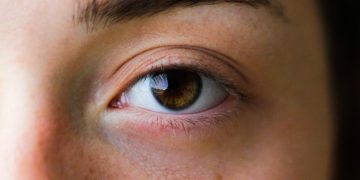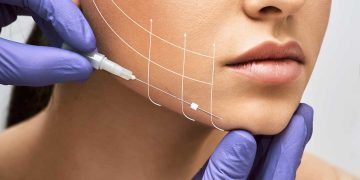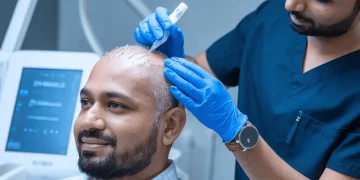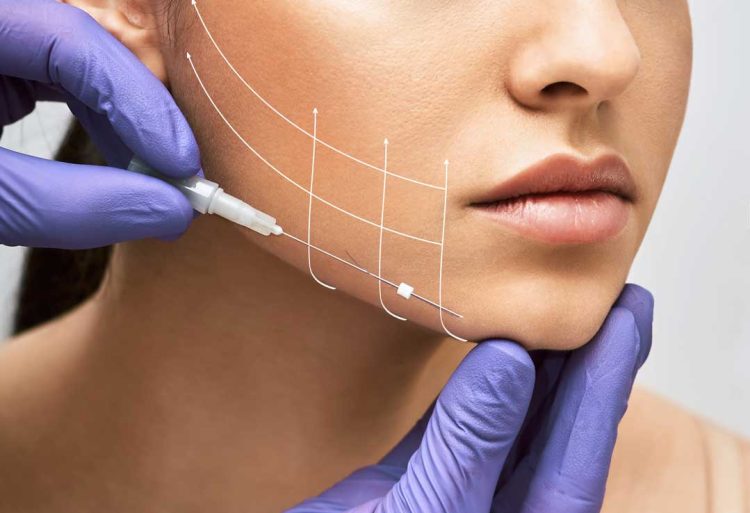The relentless pursuit of youth and a rejuvenated appearance has fueled a multi-billion-dollar aesthetic industry, constantly innovating with promises of less invasive, more convenient solutions. At the forefront of this “lunch-time procedure” revolution is the thread lift, often heralded as the non-surgical facelift. But as its popularity soars, a critical question demands an answer: Is thread lifting a truly safe and effective alternative to the gold-standard surgical facelift? The answer is not a simple yes or no, but a nuanced exploration of technology, biology, and risk management.
This comprehensive analysis delves into the science behind thread lifts, contrasting them with traditional facelift surgery across the key subtopics of PDO thread technology, collagen stimulation, the recovery process, and overarching risk management. By dissecting these elements, we can move beyond marketing hype to a clear-eyed understanding of where thread lifts excel and where they fall short.
The Science of Suspension: Understanding PDO Threads and Their Mechanism
At its core, a thread lift is a minimally invasive procedure designed to lift and tighten sagging skin. The most commonly used threads are made of Polydioxanone (PDO), a biocompatible and biodegradable polymer that has been safely used in medical sutures for decades.
PDO threads come in various forms, each with a specific purpose:
- Smooth Threads: These are fine, smooth threads often used in large quantities to stimulate collagen production. They are typically inserted in a meshed pattern beneath the skin’s surface to act as a scaffold for new collagen growth, providing subtle tightening and skin quality improvement.
- Barbed/Cogged Threads: These are the workhorses of the non-surgical lift. They feature tiny, microscopic barbs or cogs along their length. Using a cannula, the practitioner inserts these threads into the deeper structural layers of the face. Once in place, the barbs anchor themselves into the subcutaneous tissue and SMAS (Superficial Musculoaponeurotic System)—the same layer addressed in a surgical facelift. The practitioner then gently pulls the thread upward, using the barbs to lift and reposition the sagging soft tissues of the face, jowls, and neck.
The mechanism of action is twofold: an immediate mechanical lift provided by the barbed threads, and a secondary, longer-term biological response—collagen stimulation. The body recognizes the PDO material as a foreign object and initiates a wound-healing response. This process floods the area with fibroblasts, the cells responsible for producing collagen and elastin. Over time, as the PDO threads naturally dissolve over approximately 6-9 months, they leave behind a network of this newly formed, firmer collagen.
This stands in stark contrast to a surgical facelift, which involves making incisions, physically separating the skin from the underlying tissues, surgically tightening the SMAS and muscular layers, removing excess skin, and re-draping the remaining skin for a more dramatic and comprehensive rejuvenation. The facelift is a structural overhaul; the thread lift is a temporary suspension and bio-stimulatory treatment.
The Promise of Regeneration: Collagen Stimulation as a Key Benefit
Perhaps the most compelling and authentic benefit of a thread lift is its ability to promote the body’s own production of collagen. While the immediate lifting effect is often visible right after the procedure (though sometimes obscured by initial swelling), the collagen-building process is a slow and steady marathon.
This neocollagenesis begins almost immediately after the procedure and continues for months, peaking around the 3–6-month mark. Even as the PDO threads dissolve, the newly formed collagen remains, providing:
- Improved skin thickness and density.
- Enhanced skin elasticity and firmness.
- Reduction in the appearance of fine lines and wrinkles.
- A more hydrated and radiant complexion.
This bio-stimulatory effect is a unique advantage that thread lifts hold over traditional surgery. While a facelift tightens and removes, it does not inherently improve the fundamental quality of the skin. In fact, some patients combine a thread lift with other procedures to achieve both structural lifting and skin quality enhancement. However, it is crucial to manage expectations. The degree of collagen stimulation varies from person to person based on age, genetics, and lifestyle, and the visual impact is one of subtle refinement, not dramatic transformation.

The Allure of Minimal Downtime: Deconstructing the Recovery Process
The recovery profile is where the thread lift markets itself most aggressively against surgical facelifts. The comparison seems almost unfair, but it is the primary driver for many potential patients.
Thread Lift Recovery:
A thread lift is typically performed under local anesthesia. The procedure itself may take 60-90 minutes. Patients can walk out of the clinic shortly after it’s completed. The immediate aftermath usually involves:
- Swelling, bruising, and tenderness at the insertion points and along the thread paths.
- A sensation of tightness or slight pulling, especially when talking or chewing.
- Possible minor dimpling or irregularity, which often resolves as swelling subsides.
Most social downtime is 3-7 days, enough for significant bruising and swelling to calm down. Patients are advised to sleep on their backs, avoid strenuous exercise for 2-3 weeks, and refrain from excessive facial movements (like wide yawning) for a period to allow the threads to stabilize. The “recovery” is predominantly about managing discomfort and letting the body’s inflammation response settle, rather than healing from surgical trauma.
Surgical Facelift Recovery:
A facelift is a major surgery requiring general anesthesia or deep sedation. The recovery is a dedicated, multi-stage process:
- First 2 Weeks: Significant bruising and swelling are expected. Drains may be in place for a day or two. Pain is managed with medication. Strict rest is mandatory.
- Weeks 3-6: Swelling gradually decreases, but some puffiness and numbness may persist. Most patients feel comfortable appearing in public, though they may not look “normal” yet.
- Months 3-6: The majority of the swelling resolves, and the final results begin to emerge. Scar maturation continues for up to a year or more.
The total commitment to recovery for a facelift is measured in weeks, not days. It requires significant planning, time off work, and social support. For those unable or unwilling to undergo this lengthy process, the thread lift’s minimal downtime is an undeniable attraction.
Navigating the Risks: A Critical Look at Safety and Complication Management
This is the crux of the safety debate. While less invasive, a thread lift is not without significant risks, and its safety profile is heavily dependent on the skill and expertise of the practitioner.
Common and Minor Risks of Thread Lifts:
- Bruising, swelling, and pain.
- Asymmetry.
- Temporary nerve injury causing weakness or an uneven smile.
- Thread visibility or palpability under the skin.
- Dimpling or puckering at the insertion sites.
Serious and Concerning Risks of Thread Lifts:
- Thread Migration: The threads, especially if not properly anchored, can shift from their original placement, leading to an undesirable result or loss of effect.
- Thread Extrusion: The thread can break through the skin, requiring removal and potentially leaving a scar.
- Infection: As with any procedure that breaks the skin, infection is a risk.
- Visible Scarring: While insertion points are tiny, they can hypothetically form noticeable scars.
- Damage to Underlying Structures: In inexperienced hands, there is a risk of damaging nerves, blood vessels, or salivary glands.
The most critical factor in risk management is practitioner selection. A thread lift is often mistakenly perceived as a simple procedure, but it demands an in-depth understanding of facial anatomy equal to that of a surgeon. The ideal practitioner—whether a dermatologist, plastic surgeon, or a highly trained and certified aesthetic doctor—must be able to not only place the threads correctly but also anticipate how the tissues will respond and manage any complications that arise.
In comparison, the risks of a facelift, while potentially more severe, are well-documented and managed within the standard of care for major surgery. These include hematoma (the most common serious complication), nerve injury (which can be permanent), scarring, hair loss at the incision sites, and anesthesia risks. However, these procedures are performed in accredited surgical facilities by surgeons with years of specialized training, creating a highly controlled environment.
Conclusion: A Temporary Solution with a Specific Place
So, is thread lifting a safe alternative to facelift surgery? The answer is conditional.
A thread lift can be a relatively safe procedure when performed by a supremely qualified and experienced medical professional on a carefully selected candidate. Ideal candidates are those in their late 30s to 50s with mild to moderate skin laxity, who seek a subtle lift and improved skin quality, and who understand the temporary nature of the results (typically 1-3 years).
However, it is a poor alternative for individuals with significant skin sagging, heavy jowls, or excess neck skin. For these patients, a thread lift will be underwhelming and potentially a waste of resources. It cannot remove skin or profoundly reposition deep facial structures like a facelift can. The “wind-blown” or “over-pulled” look that sometimes occurs is often a result of using threads to lift tissue that is simply too heavy for the technique.
The safety equation, therefore, shifts. The lower inherent risk of the procedure (no general anesthesia, no large incisions) is balanced by a higher risk of an unsatisfactory outcome if patient selection or technique is poor. A surgical facelift carries higher inherent risks but offers a much higher probability of a dramatic, long-lasting (5-10 years or more), and predictable result in the right hands.
In conclusion, a thread lift is not a one-to-one replacement for a facelift. It is a different class of treatment altogether—a minimally invasive, collagen-stimulating procedure with modest lifting capabilities. Its safety is real but fragile, entirely dependent on expert execution. For those seeking a subtle refresh with minimal downtime, it is a valuable tool. But for those battling the undeniable forces of gravity and aging, the surgical facelift remains the unchallenged, definitive solution. The choice is not between good and bad, but between the right tool for the right job.













































